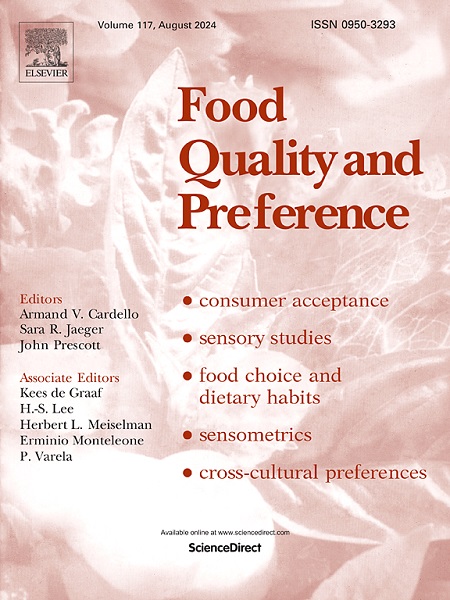Trying tongs and spoiling spoons: Effort nudges influence food consumption and may motivate healthier food decisions
IF 4.9
1区 农林科学
Q1 FOOD SCIENCE & TECHNOLOGY
引用次数: 0
Abstract
Healthier eating is crucial to tackle the rapid rise of obesity and noncommunicable diseases worldwide. This research examined two nudging interventions intended to decrease food consumption: price display and serving utensils. Forecasting experiments showed that people predicted displaying the price of the food per kg (vs. hg) should decrease the amount of food purchased (Study 1 A), but that using tongs (vs. spoon) would be ineffective (Study 1B). In contrast to these results, a high-powered preregistered field study at a university canteen (Study 2) revealed that price display had no notable effect; however, tongs (vs. spoon) reliably decreased the average amount of food purchased per meal by 14 g or 3.1 %, also when compared to weeks when both types of serving utensils were available. An image-supported online experiment with enhanced rigor and control (Study 3) replicated the results regarding tongs (vs. spoon) for a particularly unhealthy food category (candy), while highlighting a psychological mechanism driving the effect. Using tongs required more effort, which decreased satisfaction tied to using said serving utensils, thereby reducing people's willingness to consume candy. Given the simplicity and cost effectiveness of swapping spoons with tongs, combined with the behavioral evidence underscoring its practical relevance, these findings might aid in steering consumers to healthier food decisions, ultimately benefiting public health.
求助全文
约1分钟内获得全文
求助全文
来源期刊

Food Quality and Preference
工程技术-食品科技
CiteScore
10.40
自引率
15.10%
发文量
263
审稿时长
38 days
期刊介绍:
Food Quality and Preference is a journal devoted to sensory, consumer and behavioural research in food and non-food products. It publishes original research, critical reviews, and short communications in sensory and consumer science, and sensometrics. In addition, the journal publishes special invited issues on important timely topics and from relevant conferences. These are aimed at bridging the gap between research and application, bringing together authors and readers in consumer and market research, sensory science, sensometrics and sensory evaluation, nutrition and food choice, as well as food research, product development and sensory quality assurance. Submissions to Food Quality and Preference are limited to papers that include some form of human measurement; papers that are limited to physical/chemical measures or the routine application of sensory, consumer or econometric analysis will not be considered unless they specifically make a novel scientific contribution in line with the journal''s coverage as outlined below.
 求助内容:
求助内容: 应助结果提醒方式:
应助结果提醒方式:


